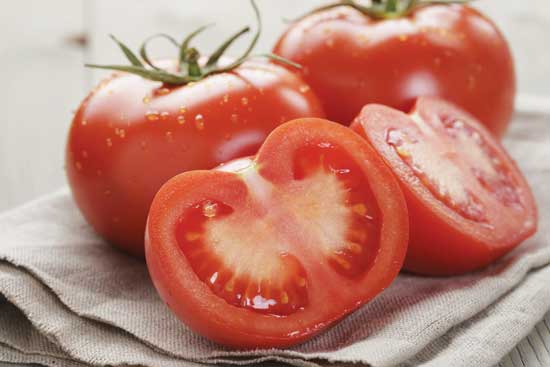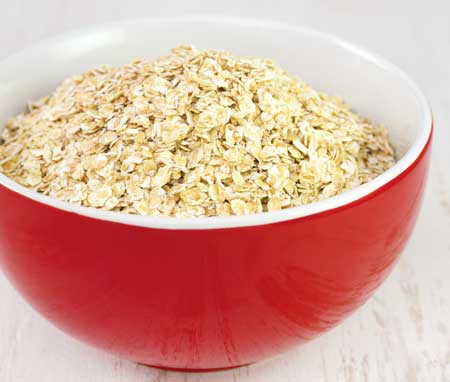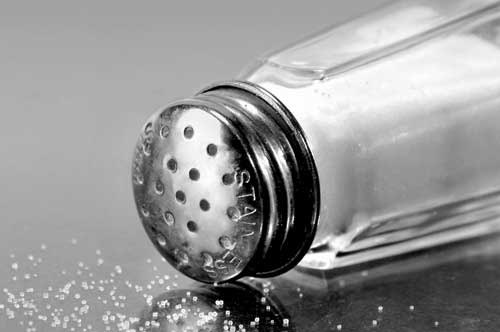Ideal tomato attributes; Trend predictions from Datamonitor
NEWS
 Student competition seeks food waste solutions
Student competition seeks food waste solutions
A recent Journal of Food Science study found that consumers consider a fresh tomato’s color he most important factor when selecting the ideal fruit, followed by juiciness, size, and seed presence, in that order.
According to the study, which involved three focus groups and a subsequent Adaptive Choice Based Conjoint survey, consumers are looking for a tomato that is red, firm, small- to medium-sized, crisp, meaty, juicy, flavorful, and with few seeds. Deviations from these features resulted in a tomato that was rejected by consumers. The researchers concluded that the results of the study can be used by tomato producers to help select cultivars that match these consumer preferences and by produce marketers for advertising purposes.
The authors also note that according to the focus group results, consumers are unlikely to buy unconventional tomato varieties, and they feel good about buying tomatoes with a local origin, though most would not be willing to pay more for organic fruit.
Datamonitor predicts world-changing trends
Edible insects and food waste initiatives were among six trends that will change the world, according to a recent Datamonitor Consumer webinar led by innovation insights director Tom Vierhile as part of the company’s ForeSights report series.
According to Vierhile, eating insects could solve a variety of food production problems, if the practice gains wider acceptance from Western consumers. Insects require fewer resources to raise, including less land, feed, and water, and they reproduce quickly. Although some consumers may have trouble looking past the texture of whole insects, insect flour—such as the cricket flour used in Exo snack bars—may help eaters stomach the nutrient-dense protein source.
Innovations in food waste reduction practices will also shape the future. Because consumers are often confused by “sell by” and “use by” dates, they tend to throw away perfectly good food. Vierhile mentioned the Daily Table concept created by former Trader Joe’s president Doug Rauch as one way to repurpose this waste; the combo restaurant and store will serve and sell expired but still-good food products. In addition, technological advances, such as “smart” fridges that take pictures of the contents inside, will help consumers shop smarter, and microchips in food packaging could indicate the food’s “real” expiration date, factoring in variations in storage and handling conditions.
The four other trends Vierhile highlighted were the rise of “smart” healthcare devices, such as activity trackers; packaged goods subscription services such as Graze and Nibblr by General Mills; 3D printing, which may one day allow users to create hot, ready-to-eat meals and print insect flour into more acceptable forms; and marijuana-containing brownies, cookies, and drinks, which Vierhile said may pose a long-term threat to alcoholic beverages.
--- PAGE BREAK ---
 Review spotlights benefits of oats
Review spotlights benefits of oats
A comprehensive collection of scientific reviews published by the British Journal of Nutrition explored the role oats may play in improving and maintaining health. The supplement issue, titled “Oats: More Than Just a Whole Grain,” was supported by unrestricted educational grants from Quaker Oats Co. and featured work from scientists from around the world.
The reviews supported previous findings as well as presented new research. Concerning oatmeal, authors presented evidence that the higher viscosity of beta-glucan in whole oats may keep eaters of oatmeal fuller longer than those who eat oat-based, ready-to-eat cereals; calorie-for-calorie, oatmeal eaters reported less hunger, increased fullness, and a reduced desire to continue eating.
Studies also explored the digestive and heart health benefits oats may provide. Whole grains can provide positive effects on the gastrointestinal tract, and oats were found to contain a resistant starch that may specifically boost a strain of beneficial bacteria in the lower GI tract. Oats have also been shown to have a positive impact on cardiovascular health, and a review of studies on oat and oat bran concluded that these foods can lower total and LDL cholesterol.
 Children’s salt consumption too high
Children’s salt consumption too high
About 90% of U.S. children aged 6–18 years eat too much sodium daily, according to a study issued by the Centers for Disease Control and Prevention (CDC). Most children consume 3,300 mg of sodium a day before salt is added at the table, which is 1,000 mg more than is recommended in the 2010 Dietary Guidelines.
The study also isolated the most common types of high-sodium foods that kids are consuming, with 43% of sodium eaten by children coming from pizza; bread and rolls; cold cuts and cured meats; sandwiches like cheeseburgers; snacks, such as chips; cheese; chicken patties, nuggets, and tenders; pasta mixed dishes, such as spaghetti with sauce; Mexican mixed dishes, such as burritos and tacos; and soup. It also found that 65% of the sodium in children’s diets comes from store-bought foods.
According to the CDC report, proposed changes to national nutrition standards are projected to reduce sodium content of school meals 25%–50% by 2022; sodium intake should be reduced by an average of about 75–150 mg per day and about 220–440 mg on days children consume school meals.
--- PAGE BREAK ---
Student competition seeks food waste solutions
In collaboration with EXPO Milano 2015 and the Italian Ministry of Agricultural, Food and Forest Policies, Università Bocconi announced the creation of a new student competition to be held in Milan, Italy. At the Bocconi EXPO2015 competition, 200 undergraduate students selected from around the world will be invited to spend a week developing innovative ways to combat food waste.
During the weeklong event, which will take place June 24–July 1, 2015, students will attend lectures specially designed by Bocconi faculty members, listen to experts selected by partners of the initiative, and be divided into teams to search for solutions to the problem of food waste. Attendees will vote for the top five ideas, and those teams will then present their plans before a panel of judges.
Students interested in applying to attend the expo will need to film a motivational video and upload it to the competition website. Visit www.foodsavingbec.com for more information.
What’s new with food companies
• Baker Cheese Factory is expanding its St. Cloud, Wis., facility, a project it expects to complete next fall.
• Cargill’s Canadian value-added meat businesses were awarded a 2014 Canada Order of Excellence for Quality award from Excellence Canada.
• Chaucer Food Group has agreed to invest in Crunchies, which makes freeze-dried fruit and vegetables.
• Chiquita Brands International Inc. terminated its merger agreement with Fyffes P.L.C. and signed a definitive merger agreement with the Cutrale-Safra group.
• Corbion Purac announced plans to construct a polylactic acid (PLA) plant in Thailand.
• To celebrate the 50th anniversary of its Brabrand, Denmark, R&D center, DuPont’s Nutrition & Health business invited food industry, government, and academic leaders to discuss how food and nutrition will evolve to meet growing global population needs in the next 50 years.
• Golden Peanut, a subsidiary of Archer Daniels Midland Co., acquired Harrell Nut Co. and announced it will change its name to Golden Peanut and Tree Nuts.
• IOI Loders Croklaan achieved SQF-Level 3 Certification for its Channahon, Ill., facility.
• Lonza Guangzhou Nansha Ltd. opened a new niacinamide plant in Nansha, China.
• Mars Food North America announced a $31 million renovation plan for its Greenville, Miss., processing plant, which is expected to begin in 2015.
• Mérieux NutriSciences Corp. acquired Kalite Sistem Laboratories Group, an independent food testing laboratory in Turkey.
• Mondelēz International Inc. will acquire an 80% stake in Kinh Do Corp.’s category-leading snacks business in Vietnam. It will also invest roughly $121 million in its Cadbury production facility in the UK, including adding automated machinery for increased efficiency.
•Multisorb Technologies, a leader in active packaging technology, announced that senior management has partnered with Summer Street Capital Partners to purchase the company.
• Nestlé opened its most water-efficient factory yet in the water-stressed state of Jalisco, Mexico. The factory will use mostly recycled water from its dairy operations and will move toward being a zero-water facility.
• Ohly, which supplies yeast extracts and powders, opened a new applications center in Hamburg, Germany.
• Norwegian company Olympic Seafood AS has consolidated its krill business and announced it has been renamed Rimfrost New Zealand Ltd.
• Purdue University is establishing one of four regional centers for research into nutrition education and obesity prevention in a nationwide project of the U.S. Dept. of Agriculture.
• Sterigenics International LLC, a provider of contract sterilization, gamma technologies, and medical isotopes, acquired Gammarad, a gamma sterilization provider in Italy.
• Symrise has launched a subsidiary in Lagos, Nigeria, which strengthens its presence in Africa.
• Tetra Pak announced that it has created the industry’s first carton made entirely from plant-based, renewable packaging materials.
 Melanie Zanoza Bartelme,
Melanie Zanoza Bartelme,
Associate Editor
[email protected]
